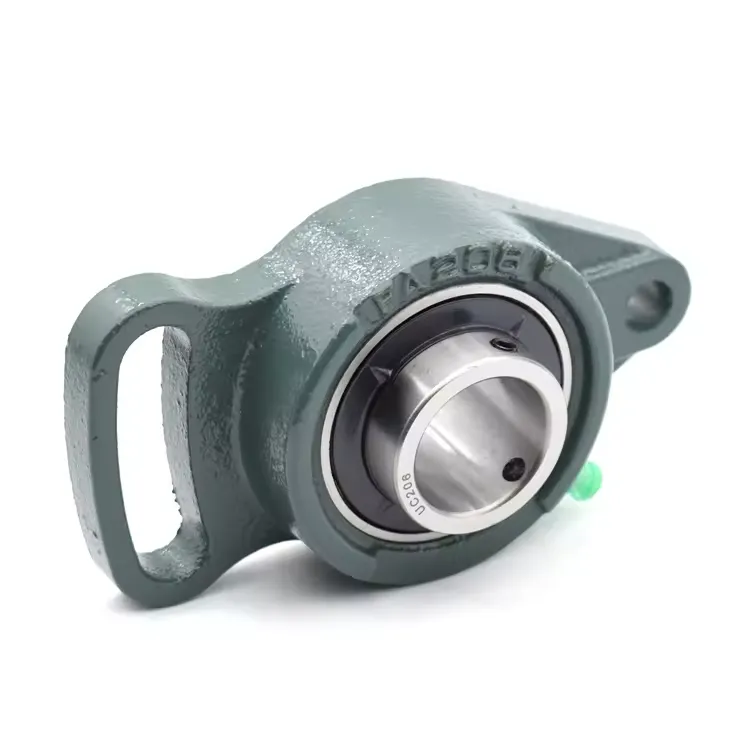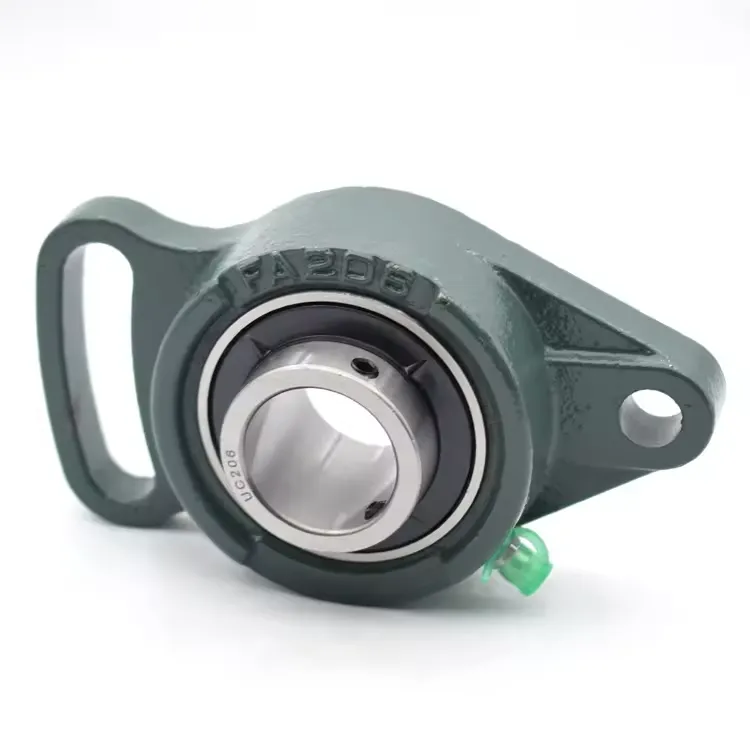Oct . 17, 2025 09:20 Back to list
UCFA206 Take Up Housing Bearing Unit Pillow Block Bearing HD
UCFA206 take-up housing: real-world notes from the shop floor
If you’ve ever fought with belt drift or tension creep on a conveyor, you already understand why the UCFA206 Take Up Housing Bearing Unit Pillow Block Bearing shows up again and again in maintenance carts. To be honest, it’s the “set it, nudge it, forget it” kind of component that keeps lines moving. Origin-wise, the maker listed here operates out of No. 3, Area B, Bearing Industry Mass Entrepreneurship Park, Beihuan Road, Linxi County, Xingtai City, Hebei Province. That matters when you need predictable lead times.

What’s trending in mounted bearings (quick scan)
Actually, three things: sealed-for-life inserts (less lube drama), predictive maintenance (IMU-based vibration checks are getting cheap), and corrosion-minded housings. Many customers say they’re prioritizing units that tolerate misalignment and dirty air—exactly where UCFA-series take-up housings do well.
Technical snapshot and specs
The UCFA layout is a cast iron take-up housing with a UC206 radial insert (grub-screw locking). Self-aligning, grease-filled, dual-lip sealed. In fact, it’s built for sliding adjustment on a take-up frame, so you can dial belt tension without dismantling the shaft.
| Type | UCFA206 Take Up Housing Bearing Unit Pillow Block Bearing |
| Bore (d) | 30 mm (UC206 insert) |
| Housing material | Cast iron (≈ HT200/GG20) |
| Insert steel | GCr15 / 52100 chrome steel, heat-treated |
| Locking | Two grub screws (≈ M6), 120° apart |
| Sealing | Dual-lip contact seal with flingers |
| Dynamic C / Static Co | ≈ 19.5 kN / ≈ 11.3 kN (real-world use may vary) |
| Speed limit (grease) | ≈ 5,200 rpm (application dependent) |
| Misalignment | Up to ±2° initial |
| Recommended shaft fit | h7; surface Ra ≤ 1.6 μm |
| Grease | Lithium-complex, NLGI 2 (ASTM D4950 GC-LB) |

Process flow, testing, and life
Materials arrive as certified bar/iron. Then: forging/turning of rings → heat treatment → precision grinding → housing casting and machining → insert assembly with seals → factory grease charge → torque and rotation checks → vibration grading (per ISO 15242) → dimensional checks (ISO 492) and marking. Typical QC includes runout checks (target low tens of μm), salt-spray on coated parts (ISO 9227), and grease spec verification (ASTM D4950). Bearing life is estimated using ISO 281 L10 methodology; actual service life leans heavily on alignment, vibration, and sealing discipline.
Where it’s used and why it helps
Common in conveyors (aggregate, grain, packaging), textiles, light-duty mining auxiliaries, and OEM take-up frames. The take-up slots simplify belt tracking; the self-aligning insert absorbs minor frame twist; and the set-screw lock is quick. Customers often say the adjustability cuts downtime—especially when the line is hot and you’ve got minutes, not hours.

Vendor comparison (at a glance)
| Item | BTZ Bearing | Generic Import | Big Brand |
|---|---|---|---|
| Certs | ISO 9001 plant (confirm lot) | Varies | ISO 9001, ABMA-aligned |
| Lead time | Short to mid | Uncertain | Predictable, longer |
| Customization | Grease/seal/coating options | Limited | Broad, pricey |
| Price | Value | Low | High |
| Warranty/support | Direct factory | Reseller dependent | Strong |
Customization and practical tips
Options you can ask for: food-grade grease, triple-lip seals, phosphate or epoxy coating, stainless insert, and pre-set screw torque. For wet or caustic washdown, favor coatings and aggressive seals; for high speed, pick a low-bleed grease. And yes, re-check alignment after tensioning—simple, but overlooked.
Field feedback and a quick example
Maintenance teams in packaging lines often report smoother belt tracking after swapping to UCFA206 Take Up Housing Bearing Unit Pillow Block Bearing assemblies with fresh inserts and clean frames. In a bottling plant scenario, the take-up adjuster made tension tweaks a five‑minute job instead of a teardown—small win, big uptime.
Compliance, testing standards, and data
Look for RoHS/REACH material declarations. Typical factory tests include vibration per ISO 15242, dimensional tolerances per ISO 492, life calculations per ISO 281, and grease spec to ASTM D4950. Corrosion checks (ISO 9227) may be requested for coated housings. Data sheets with lot-specific results are usually available on request.
References:
1) ISO 281 Rolling bearings — Dynamic load ratings and rating life
2) ISO 492 Rolling bearings — Radial bearings — Tolerances
3) ISO 15242 Measurement of vibration of rolling bearings
4) ASTM D4950 Classification and Specification of Automotive Service Greases
5) ISO 9227 Corrosion tests in artificial atmospheres — Salt spray tests
6) ABMA 9 Load Ratings and Fatigue Life for Ball Bearings
7) EU RoHS Directive 2011/65/EU (and amendments)
Latest news
-
Custom 6007 Ball Bearing – Tailored Solutions for Industrial Reliability
NewsNov.24,2025
-
Custom Small Spherical Bearings - Precision Solutions for Global Industries | BTZ Bearing
NewsNov.23,2025
-
Custom Silicon Nitride Balls - Durable, Lightweight Ceramic Precision Components
NewsNov.22,2025
-
Custom Spherical Bearing Replacement | Tailored Solutions for Industry Uptime
NewsNov.22,2025
-
Custom Silicon Nitride Ceramic Bearings: Durable & Efficient Solutions for Advanced Industries
NewsNov.20,2025
-
Custom AG Bearings - Enhance Agricultural Equipment Performance and Durability
NewsNov.19,2025




